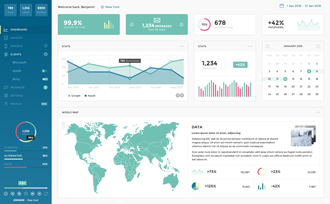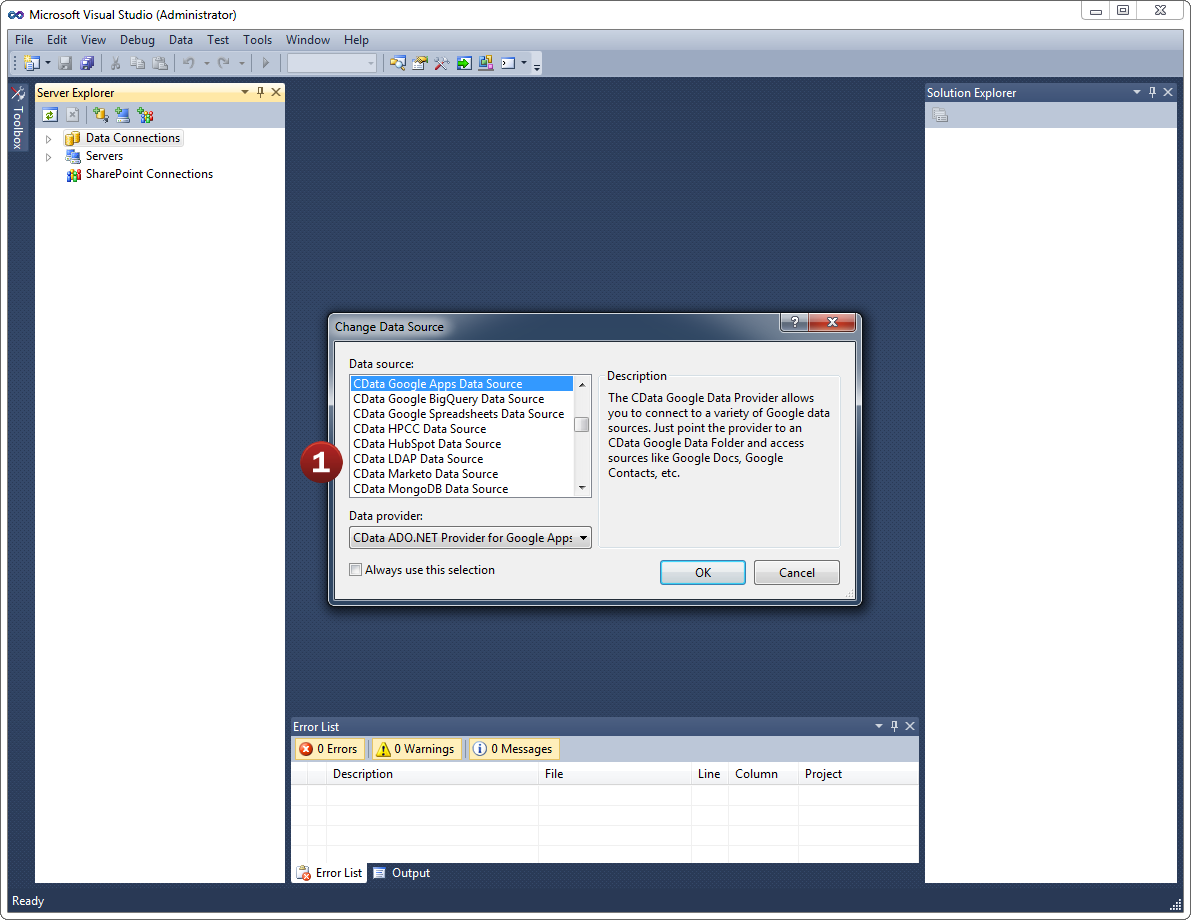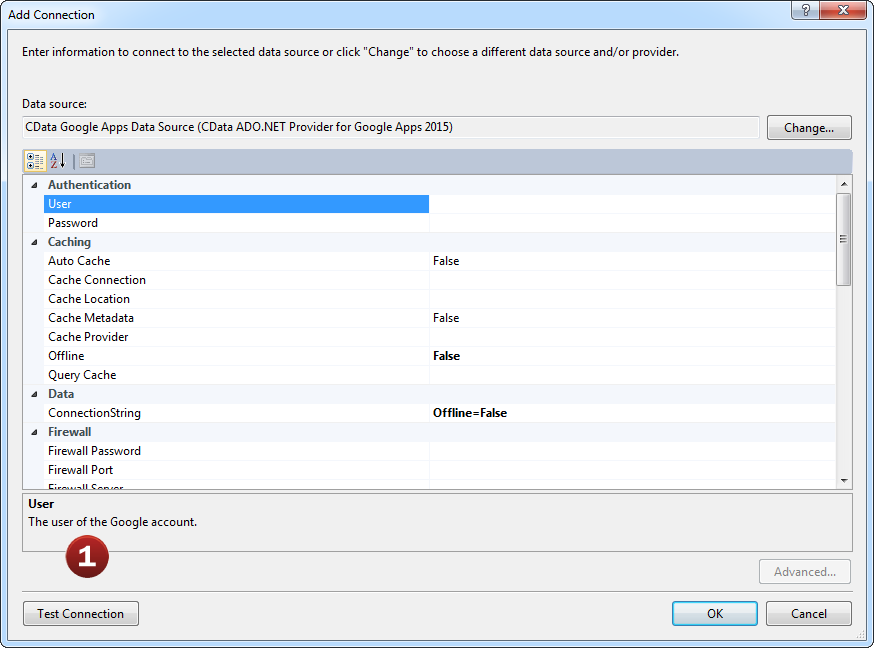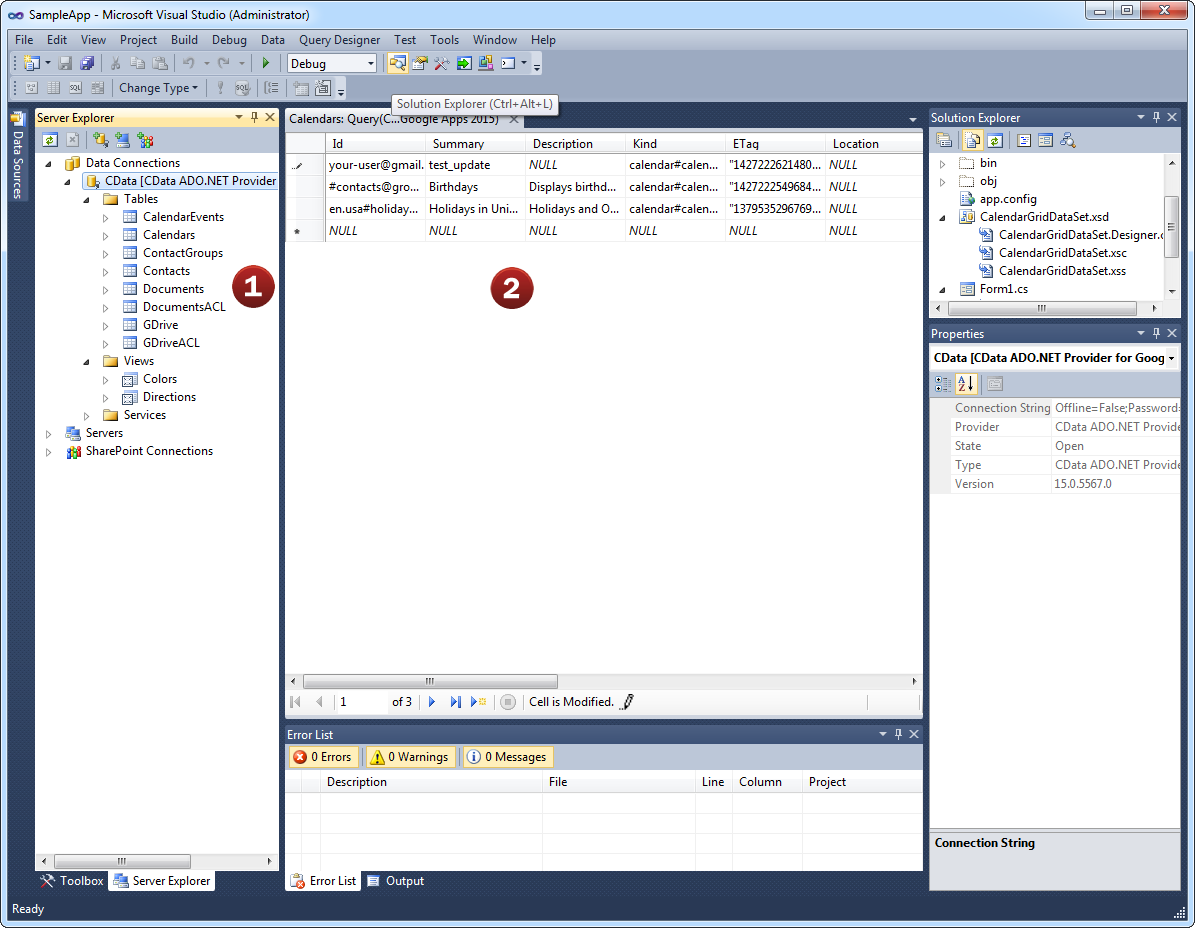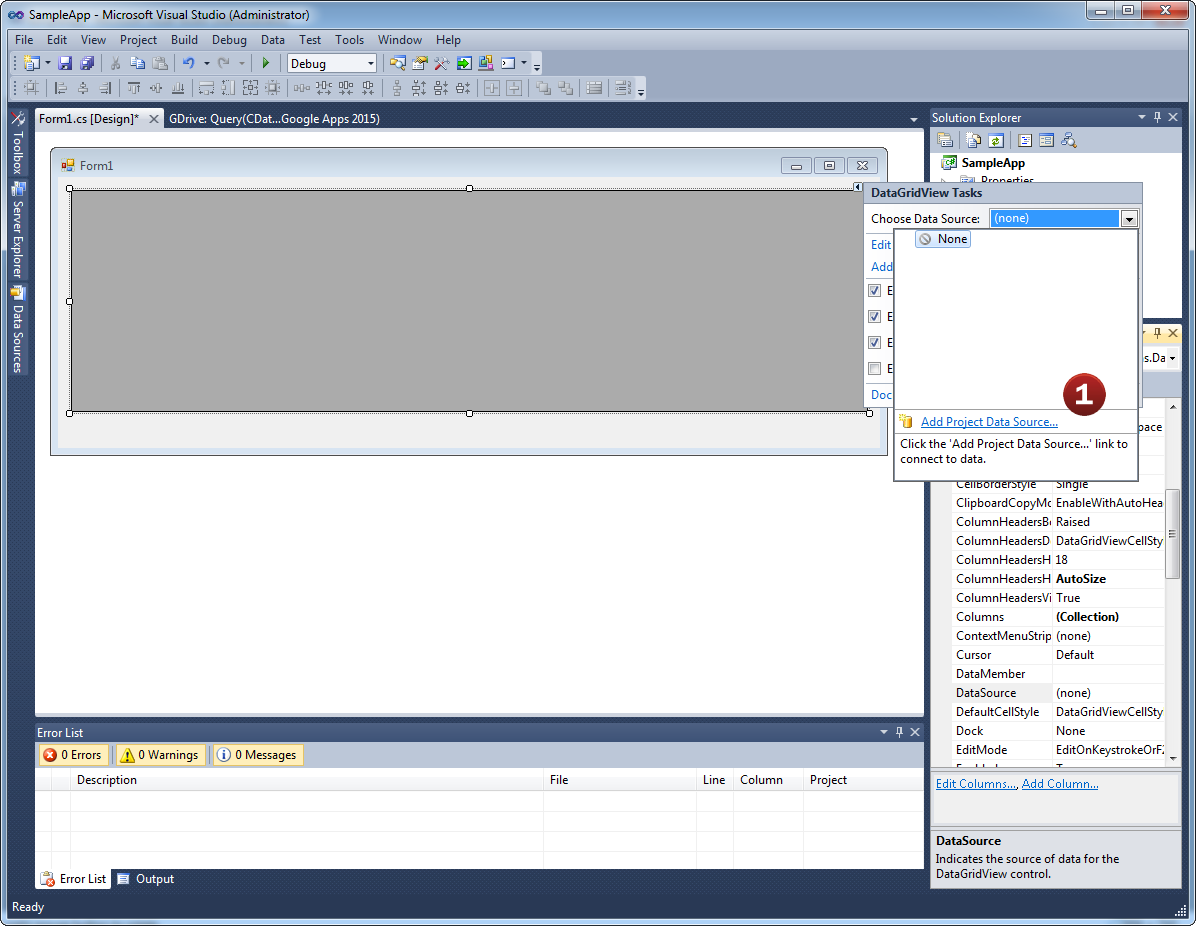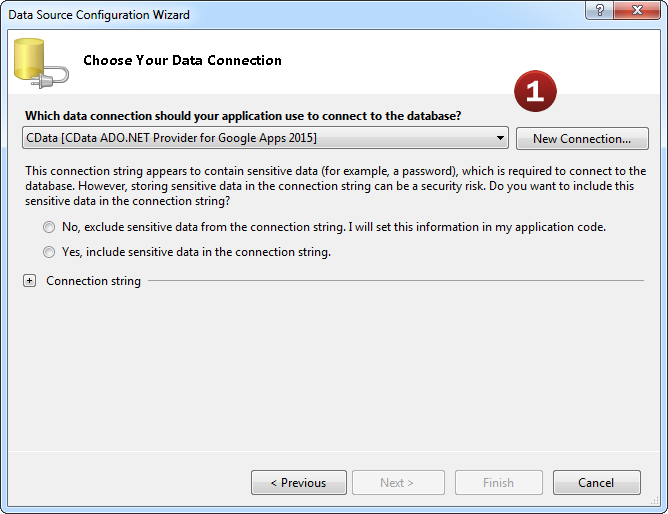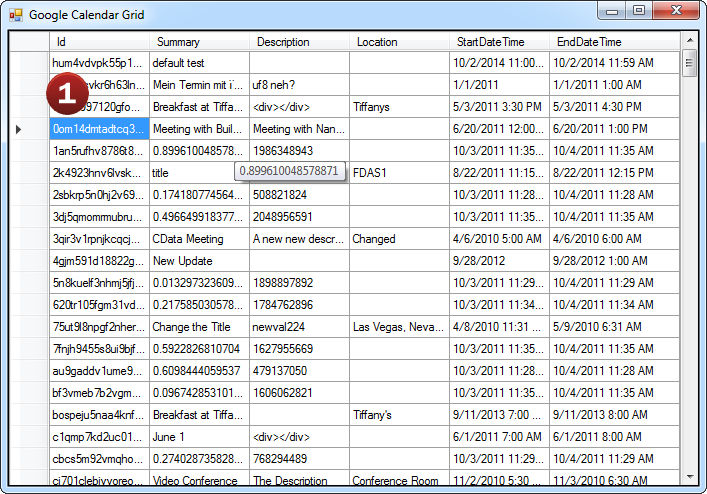Discover how a bimodal integration strategy can address the major data management challenges facing your organization today.
Get the Report →The Authorize.Net ADO.NET Data Provider enables user to easily connect to Authorize.Net data from .NET applications. Easy-to-use Authorize.Net client enables .NET-based applications to easily consume Authorize.NET Transactions, Customers, BatchStatistic, etc.
Features
- SQL-92 access to Authorize.Net transaction data
- Capture transactions and charge credit cards using stored procedures
- Powerful metadata querying enables SQL-like access to non-database sources
- Push down query optimization pushes SQL operations down to the server whenever possible, increasing performance
- Client-side query execution engine, supports SQL-92 operations that are not available server-side
- Connect to live Authorize.Net data, for real-time data access
- Full support for data aggregation and complex JOINs in SQL queries
- Secure connectivity through modern cryptography, including TLS 1.2, SHA-256, ECC, etc.
- Seamless integration with leading BI, reporting, and ETL tools and with custom applications
Specifications
- DataBind to Authorize.Net using standard Visual Studio wizards.
- Supports ADO.NET Entity Framework (EF 5 & 6), LINQ to Datasets, etc.
- Full Unicode support for data, parameter, & metadata.
- Support for 32-bit and 64-bit operating systems.
- Supports .NET Framework 4.0+ and .NET Standard 2.0 (.NET Core 2.1+, .NET 6.0).
ADO.NET Access to Authorize.Net
Full-featured and consistent SQL access to any supported data source through ADO.NET
-
Fully-managed .NET
100% fully managed ADO.NET libraries supporting .NET Standard, .NET Core 2.0, & Xamarin.
-
Developer Friendly
Seamless integration with all versions of Visual Studio.
-
Powerful ADO.NET Features
Including support for ADO.NET Entity Framework (EF 5 & 6), ADO.NET 2.0, LINQ to Datasets, etc.
-
Replication and Caching
Our replication and caching commands make it easy to copy data to local and cloud data stores such as Oracle, SQL Server, Google Cloud SQL, etc. The replication commands include many features that allow for intelligent incremental updates to cached data.
-
String, Date, Numeric SQL Functions
The driver includes a library of 50 plus functions that can manipulate column values into the desired result. Popular examples include Regex, JSON, and XML processing functions.
-
Collaborative Query Processing
Our drivers enhance the data source's capabilities by additional client side processing, when needed, to enable analytic summaries of data such as SUM, AVG, MAX, MIN, etc.
-
Easily Customizable and Configurable
The data model exposed by our ADO.NET Providers can easily be customized to add or remove tables/columns, change data types, etc. without requiring a new build. These customizations are supported at runtime using human-readable schema files that are easy to edit.
-
Secure Connectivity
Includes standard Enterprise-class security features such as TLS/ SSL data encryption for all client-server communications.
Standard ADO.NET Access to Authorize.Net
The Authorize.Net ADO.NET Provider offers the most natural way to access Authorize.Net data from any .NET application. Simply use Authorize.Net Data Provider objects to connect and access data just as you would access any traditional database. You will be able to use the Authorize.Net Data Provider through Visual Studio Server Explorer, in code through familiar classes, and in data controls like DataGridView, GridView, DataSet, etc.
The CData ADO.NET Provider for Authorize.Net hides the complexity of accessing data and provides additional powerful security features, smart caching, batching, socket management, and more.
Working with DataAdapters, DataSets, DataTables, etc.
The Authorize.Net Data Provider has the same ADO.NET architecture as the native .NET data providers for SQL Server and OLEDB, including: Authorize.NetConnection, Authorize.NetCommand, Authorize.NetDataAdapter, Authorize.NetDataReader, Authorize.NetDataSource, Authorize.NetParameter, etc. Because of this you can now access Authorize.Net data in an easy, familiar way.
For example:
using (Authorize.NetConnection conn = new Authorize.NetConnection("...")) {
string select = "SELECT * FROM Transactions";
Authorize.NetCommand cmd = new Authorize.NetCommand(select, conn);
Authorize.NetDataAdapter adapter = new Authorize.NetDataAdapter(cmd);
using (adapter) {
DataTable table = new DataTable();
adapter.Fill(table);
...
}
}
ADO.NET Provider Performance
With traditional approaches to remote access, performance bottlenecks can spell disaster for applications. Regardless if an application is created for internal use, a commercial project, web, or mobile application, slow performance can rapidly lead to project failure. Accessing data from any remote source has the potential to create these problems. Common issues include:
- Network Connections - Slow network connections and latency issues are common in mobile applications.
- Service Delays - Delays due to service interruptions, resulting in server hardware or software updates.
- Large Data - Intentional or unintentional requests for large amounts of data.
- Disconnects - Complete loss of network connectivity.
The CData ADO.NET Provider for Authorize.Net solves these issues by supporting powerful smart caching technology that can greatly improve the performance and dramatically reduce application bottlenecks.
Smart Caching
Smart caching is a configurable option that works by storing queried data into a local database. Enabling smart caching creates a persistent local cache database that contains a replica of data retrieved from the remote source. The cache database is small, lightweight, blazing-fast, and it can be shared by multiple connections as persistent storage.
Caching with our ADO.NET Providers is highly configurable, including options for:
- Auto Cache - Maintain an automatic local cache of data on all requests. The provider will automatically load data into the cache database each time you execute a SELECT query. Each row returned by the query will be inserted or updated as necessary into the corresponding table in the cache database.
- Explicit Cache - Cache only on demand. Developers decide exactly what data gets stored in the cache and when it is updated. Explicit caching provides full control over the cache contents by using explicit execution of CACHE statements.
- No Cache - All requests access only live data and no local cache file is created.
This powerful caching functionality increases application performance and allows applications to disconnect and continue limited functioning without writing code for additional local storage and/or data serialization/deserialization.
More information about ADO.NET Provider caching and best caching practices is available in the included help files.
Visual Studio Integration & Server Explorer
Working with the new Authorize.Net ADO.NET Provider is easy. As a fully-managed .NET Data Provider, the Authorize.Net Data Provider integrates seamlessly with the Visual Studio development environment as well as any .NET application.
As an ADO.NET Data Provider, Authorize.Net ADO.NET Provider can be used to access and explore Authorize.Net data directly from the Visual Studio Server Explorer.
It's easy. As a standard ADO.NET adapter, developers can connect the Server Explorer to Authorize.Net ADO.NET Provider just like connecting to any standard database.
- Add a new Data Connection from the Server Explorer and select the Authorize.Net Data Source
- Configure the basic connection properties to access your Authorize.Net account data.
Explore all of the data available! Authorize.Net ADO.NET Provider makes it easy to access live Authorize.Net data from Visual Studio.
- After configuring the connection, explore the feeds, views, and services provided by the Authorize.Net Data Source.
- These constructs return live Authorize.Net data that developers can work with directly from within Visual Studio!
Developer Integration: Databind to Authorize.Net
Connecting Web, Desktop, and Mobile .NET applications with Authorize.Net is just like working with SQL Server. It is even possible to integrate Authorize.Net ADO.NET Provider into applications without writing code.
Developers are free to access the Authorize.Net ADO.NET Provider in whatever way they like best. Either visually through the Visual Studio Winforms or Webforms designers, or directly through code.
- Developers can connect the Authorize.Net Data Source directly to form components by configuring the object's smart tags.
- Add a new Data Connection from the Server Explorer and select the Authorize.Net Data Source. Then, select the feed, view, or services you would like to connect the object to.
Done! It's just like connecting to SQL Server.
- Once the object is bound to the data source, applications can easily interact with Authorize.Net data with full read/write (CRUD) support.
Popular ADO Videos:







